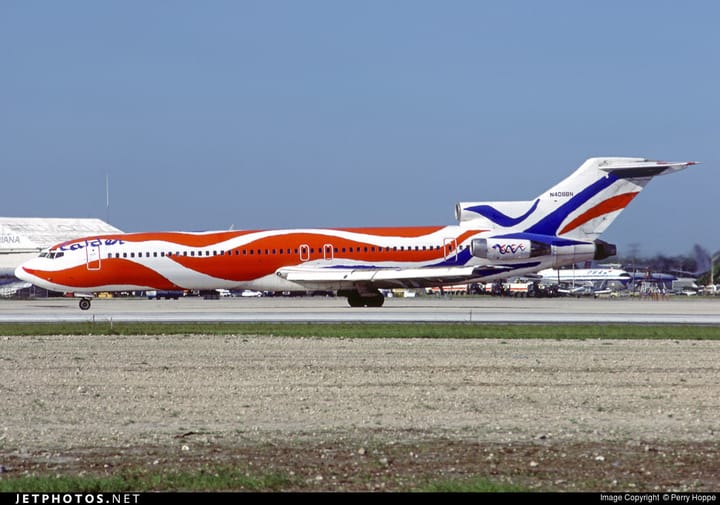On January 5, 2024, what started as a routine climb out of Portland for Alaska Airlines Flight 1282 quickly morphed into one of the most harrowing incidents in recent U.S. aviation history. As the Boeing 737-9 MAX (registration N704AL) ascended through 14,830 feet, a thunderous bang reverberated through the cabin—the left mid-exit door (MED) plug had explosively detached, leaving a gaping void in the fuselage. The chilling blast of wind, the sudden depressurization, and the sight of daylight pouring through the aircraft’s hull were reminders of just how critical every rivet and bolt is to flight safety. Now, with the National Transportation Safety Board (NTSB) releasing its synopsis ahead of the final report in June 2025, we have an unprecedented window into a chain of systemic lapses at Boeing—lapses that have sent shockwaves through the aviation world.
The 737 MAX: Context and Complexity
To understand the magnitude of this incident, one must first appreciate the technical and historical context of the 737 MAX program. The MAX is Boeing’s latest iteration of the venerable 737, the world’s best-selling jetliner since its introduction in 1968. With the MAX, Boeing aimed to squeeze out greater fuel efficiency and range while inheriting the same fuselage width and basic design lineage. Crucially, the 737-9 variant features “door plugs” over the mid-cabin exit doors—removable panels installed in place of functional doors when an airline configures the cabin for fewer seats than the maximum certified capacity. These plugs are engineered to withstand the same pressure differentials and structural stresses as conventional doors, making their integrity absolutely non-negotiable.
What Happened on Flight 1282?
Shortly after takeoff, as Flight 1282 climbed out of Portland International Airport, the left MED plug violently separated from the aircraft. The sudden decompression triggered oxygen masks, ripped seatbacks, and ejected passengers’ belongings into the cold January sky. Miraculously, there were no fatalities or serious injuries, but the incident instantly evoked memories of other infamous decompression accidents—from Aloha Airlines 243 in 1988 to the Southwest 1380 engine failure in 2018.
Yet, the cause here was different: the failure of a modern, factory-installed door plug on one of the world’s newest jets. The NTSB’s preliminary findings, now detailed in its June 2025 synopsis, have laid bare a disturbing sequence of missteps—not just a singular error, but a cascade of missed checks and broken processes at Boeing’s Renton assembly line.
NTSB’s Findings: A Systemic Breakdown
The NTSB’s synopsis is unequivocal: the door plug was installed without four critical retaining bolts. The plug had been removed at the factory to address paint damage, but when it was reinstalled, the bolts that lock it to the fuselage structure were never replaced. In the rush of production, multiple teams and inspectors missed this glaring omission. The plug was held in place by nothing more than friction and interior trim until the forces of pressurization, on its 154th flight, proved too much.
Worse, the board found that Boeing’s documentation and tracking systems failed to flag the plug’s reinstallation status. Quality assurance protocols were bypassed, and photographic evidence—usually required to verify such critical work—was missing. The NTSB also highlighted a “siloed” communication culture, where teams worked in isolation, compounding the risk of oversight.
This wasn’t a case of a rogue mechanic or one-off negligence. The NTSB’s language is stark: “systemic lapses.” Boeing’s safety management systems, implemented post-MAX grounding and intended to catch precisely these sorts of errors, failed to function as designed. The incident has been called a “watershed moment” for quality control in modern jetliner manufacturing.
Why It Matters: Safety, Trust, and the Future of Aviation
The implications of the Alaska 1282 blowout are vast and multifaceted:
- Passenger Safety: The loss of a door plug at altitude underscores how even the smallest assembly lapse can have catastrophic consequences. While no lives were lost, the event could have been tragic under slightly different circumstances—a child or adult seated directly next to the plug, for instance, could have been ejected.
- Regulatory Scrutiny: The FAA grounded all U.S.-based 737-9 MAX aircraft with similar door plug configurations for weeks. International regulators followed suit. Each aircraft had to be inspected for missing bolts or other assembly issues, causing significant disruption.
- Boeing’s Reputation: For Boeing, already battered by the 737 MAX MCAS crisis of 2018-2019, this episode is another blow to its credibility. Airlines—many of whom only recently restored MAX jets to service—are demanding new assurances. The company’s CEO and leadership have faced Congressional grilling, and production rates have slowed as the FAA imposes tougher oversight.
- Industry-Wide Impact: Trust in the airworthiness certification process has been shaken. Airbus, Boeing’s chief rival, has seen a surge in orders as some carriers hedge their bets. Suppliers, too, are under pressure to document every step.
- Technological and Operational Changes: The industry is now re-examining the use of door plugs, the documentation of assembly steps, and the digital tracking of parts and maintenance actions. Calls for more automation, real-time assembly monitoring, and enhanced digital “paper trails” are growing louder.
Ripples Through the Aviation Ecosystem
For passengers, the Alaska 1282 incident is a reminder that air travel—remarkably safe as it is—relies on countless invisible layers of diligence. The fact that such a basic assembly error could go undetected in the world’s most scrutinized production environment is sobering. Airlines are redoubling their push for transparency from manufacturers, while flight crews are undergoing refresher training on decompression procedures and emergency response.
For Boeing, the incident has catalyzed a sweeping internal review. New quality control measures, whistleblower protections, and independent audits are being implemented. The FAA has embedded more inspectors at Renton. There is a renewed focus on “just culture”—encouraging employees to report potential problems without fear of reprisal.
From a technological standpoint, the industry is exploring how to digitize and automate more of the assembly verification process. Imagine a future where every bolt and fastener is RFID tagged and scanned at each installation, with AI-driven systems flagging any missing components before the aircraft leaves the production line. The Alaska 1282 event may prove to be the catalyst that pushes such innovations from concept to reality.
Looking Ahead: Lessons and Legacy
The story of Alaska Airlines Flight 1282 is not merely a tale of one door plug, one aircraft, or even one company. It’s a clarion call for the entire aviation sector to re-examine the “human factors” at the heart of complex manufacturing. As the NTSB prepares its full final report, it’s clear that the lessons from this near-disaster will reverberate far beyond Renton’s factory floor.
For plane enthusiasts and aviation professionals alike, the incident is a potent reminder of both the resilience and the fragility of flight. Every successful takeoff and landing is the sum of thousands of unseen decisions, checks, and safeguards. When even one link in that chain is weak, the consequences can be instantaneous and dramatic.
As the industry absorbs the NTSB’s findings and moves toward a safer, more transparent future, the Alaska 1282 event will stand as a pivotal chapter in aviation history—a moment when a hole in the sky forced an entire industry to look inward, confront its vulnerabilities, and recommit to the relentless pursuit of safety. For every passenger who boards a 737, and for every engineer who signs off on a completed jet, the lessons of that January day will not be forgotten.


